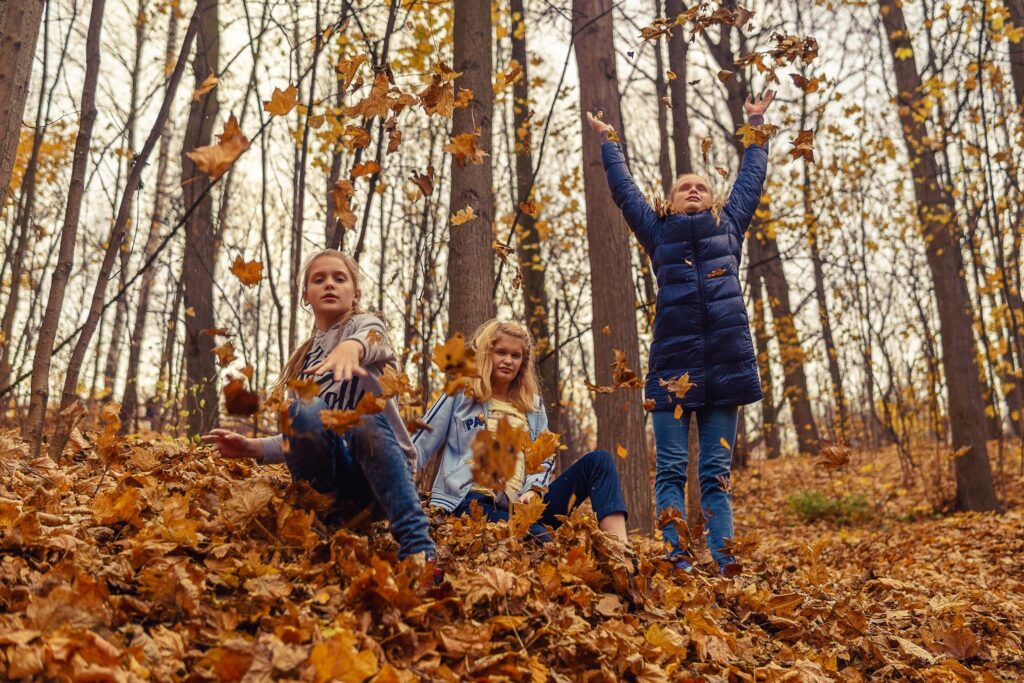With the fall season in full-swing, there are so many ways to get your child engaged in a variety of sensory experiences. This season brings about so many changes; from the weather, falling leaves, fresh harvests, warmer clothing, to the time that the sun sets. Allowing children to explore the elements of their surroundings helps them engage each of their senses, which in turn helps them process and make sense of the world around them. Understanding the differences that come along with each season will help your child learn about change over the course of the year.
Here is a list of fall activities that stimulate our sensory systems:
Pumpkin picking: This is a family-friendly fall activity that is a great sensory experience for children. Picking pumpkins up off the ground is considered “heavy-work”, which is calming and organizing to our proprioceptive system. If the pumpkin is too heavy for your child to lift, they can roll the pumpkin on the ground to receive the same type of input. You could make it fun and have “pumpkin races” with your child to see who can roll the pumpkin to the finish line the fastest. Once you bring the pumpkins home, your child can be encouraged to clean the outsides of the pumpkins off with foam soap. Scrubbing the pumpkin is another way to receive proprioceptive input and the foam soap is stimulating to our tactile, or otherwise known as touch system.
Pumpkin carving: With help from a parent, children can become involved in carving different shapes into pumpkins to put on display. They can use their fingers to feel the ridges that are carved, as well as explore the different textures inside and outside of the pumpkin. You can even come up with a fun challenge and encourage your child to sift through the inside of the pumpkin to collect seeds to make an art project.
Collecting leaves: On a walk, you can encourage your child to pick up leaves of all colors, shapes, and sizes. Have them describe the texture of each leaf they pick up. Is it crunchy? Is the leaf soft? Are there holes left in the leaf from bug bites? Once all of the leaves are collected, they can be incorporated into an art project!
One fun activity is to create a “tree trunk” out of brown construction paper, and have your child glue their collected leaves to the top, making their very own tree!
Another activity is to paint the back of each leaf and “stamp” them onto paper so your child can see the trails made from the ridges and veins of each leaf.
Rake leaves and jump into the pile: Having your child rake leaves is a great way for them to receive calming and organizing proprioceptive input, as they use their muscles to push and pull the rake. Once they make a big pile, they can be encouraged to jump into nature’s very own ball pit! Not only does this activity stimulate the tactile system, as they feel the texture of the leaves press up against their skin, but it provides vestibular input as well from jumping into the pile. This type of input helps your child understand where their body is in space.
Go on a nature walk: This type of activity can be incorporated into a daily routine with your child, either to the bus stop, after dinner, or a quick trip to the park. Each time you go on a walk together, have them step on the leaves to hear them “crunch”. Have them notice the sounds of the birds, bugs, and crickets, and ask them to mimic each sound. Ask your child to describe what the weather feels like and which types of clothing should be worn to match it.
Cook a fall meal together: The fall season brings about so many signature scents such as pumpkin spice, cinnamon, cranberry, and the savory scents of many soups. As you cook dinner, have your child be as involved as possible. You can encourage them to take deep breaths in through their nose and out through their mouth and have them describe the smell of each meal.
Since play is one of the main occupations of a child, it is so important to keep each of these activities fun and exciting! Encourage your child to ask questions and have them be as involved as possible with each activity. Happy Fall!
Written by Sam Macejko, OTS

